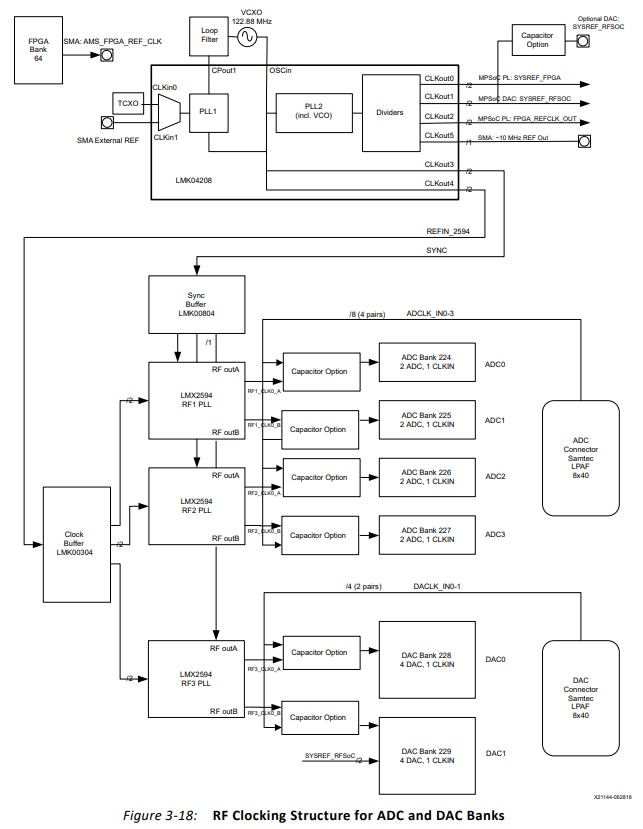Other Parts Discussed in Thread: LMK04208
I am currently planning a prototype design using the Xilinx ZCU111 board as a platform, which itself uses the LMX2594 to generate some of its clocks. My application requires that one of these clocks be periodically adjusted on-the-fly based on the result of a clock-error calculation, and this adjustment must be smooth - the clock may not shut down during the adjustment, and ideally there should be as little phase noise as possible during the transition from one frequency to the next.
The clock adjustments in question are expected to be quite small, and should be achievable using only the N-divider numerator value for control. I also see in the datasheet that the part provides a 'ramping' feature for smooth frequency transitions within a given calibration domain. However, using either the ramp, or a direct write to the numerator, seems to require writing to the R0 register (FACL_EN) and in section 7.3.4 I read, "To make the fractional spurs consistent, the modulator is reset any time that the R0 register is programmed." Does this mean that glitchless reconfiguration is simply not possible with this part? If it is possible, how would I best go about achieving it?


